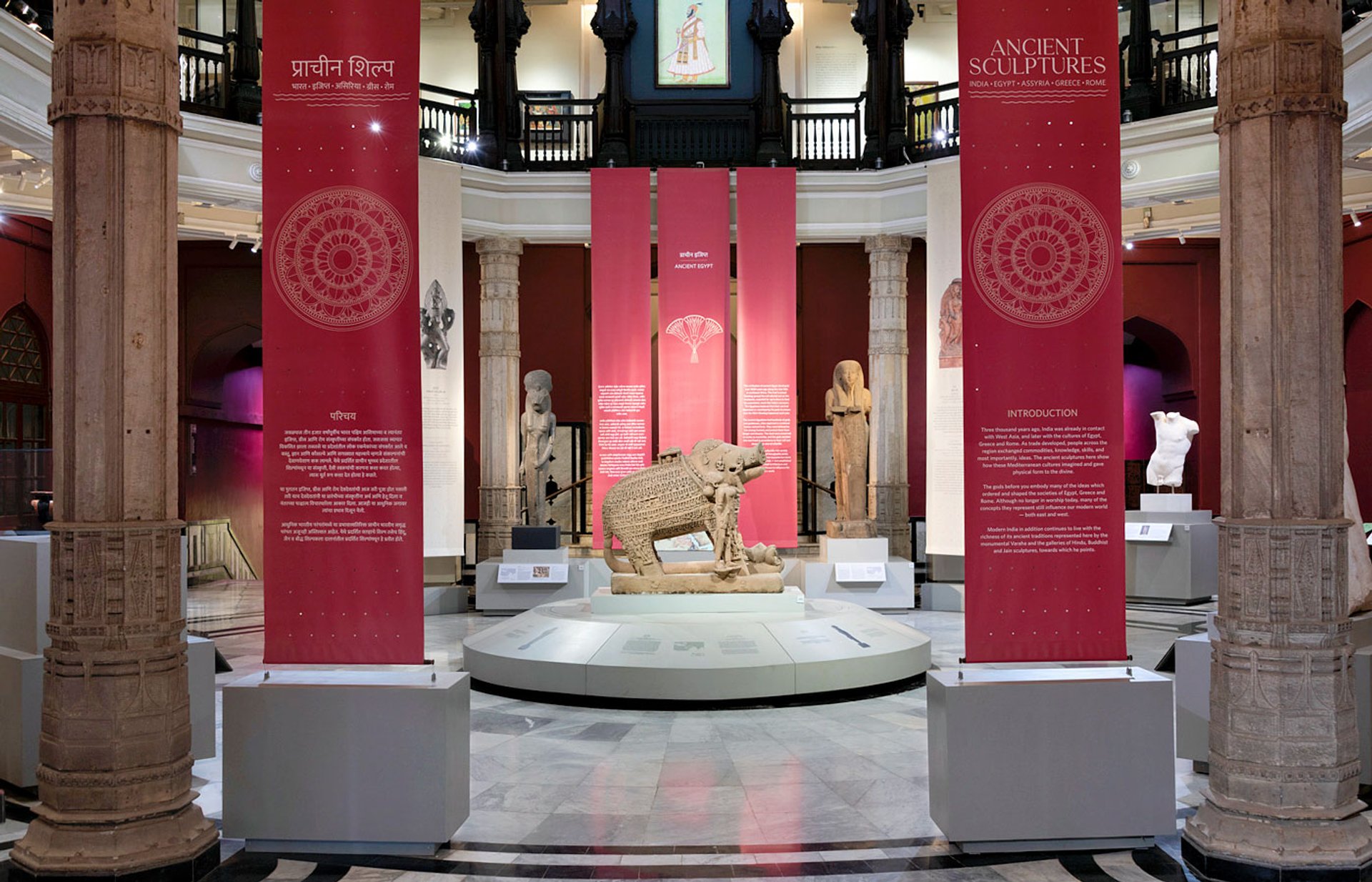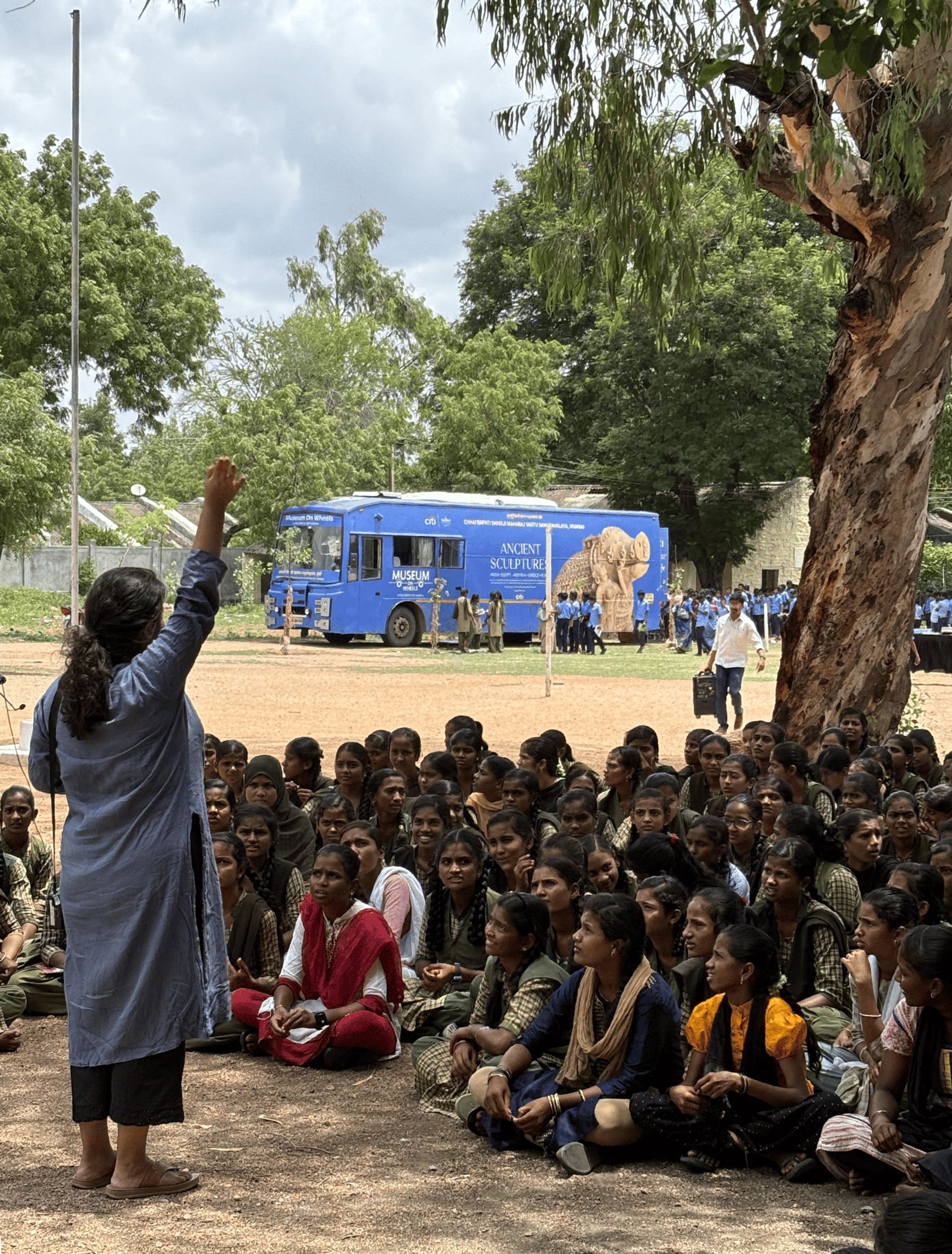If you leave the grand old Victorian shell of the Bombay High Court and walk towards the Gateway of India where it juts out over the Arabian Sea, you will pass a museum built 100 years ago in the “Indo-Saracenic” style—an ornate concoction of domes and lawns half-way between Oriel College, Oxford, and the Alhambra palace in Granada.
It was built and named to commemorate the visit to Bombay in 1905 of the then Prince of Wales, the future King George V, whose statue still stands in front of the museum’s gleaming secular dome. Funded by a class of Zoroastrian businessmen—known as Parsis—who owed their enormous fortunes to the British, the museum was soon filled with the finds of colonial archaeologists working on the Western flank of India in the 1920s and 1930s, along with the fruits of lavish Parsi collecting in the European mould: French silver, Japanese vases, and English painting.
Then, 30 years ago, Bombay’s Prince of Wales Museum became Mumbai’s Chhatrapati Shivaji Maharaj Vastu Sangrahalaya (CSMVS), as the Republic of India set about transforming its character and ideology. The city’s foremost museum was renamed after a proto-nationalist Hindu leader who had fought against the Moghuls in the 18th century and was revered by the state’s new right-wing government.

An installation view of Ancient Sculpture of India, Egypt, Assyria, Greece and Rome (2024) at CSMVS. The Mumbai institution created the mobile museums project in collaboration with the exhibition, which was co-curated with J. Paul Getty Museum in Los Angeles, the Berlin State Museums and the British Museum in London Courtesy: CSMVS
So it is fitting that one of the museum’s most successful initiatives should tell the story of how the way we understand history has changed over time. The CSMVS has retrofitted three antiquated public buses as mobile mini-museums, plying historiography on the chaotic highways of the world’s most populous country. “The objective,” according to the CSMVS curator Vaidehi Savnal, “is to see how our understanding of civilisation changes”. The buses have travelled to every corner of the state of Maharashtra, and are now starting to venture to other parts of India, carrying carefully curated miniature exhibitions which tell the story of how narratives arise from material culture.
“Its the opposite of what they get at school, which is a narrative of life, with illustrations,” said Savnal. “Here we start with the objects and go on to the narrative.” In other words, the initiative is designed to foreground objects.
In October 2024, the museum held an exhibition, Ancient Sculpture of India, Egypt, Assyria, Greece and Rome, using loans from the J. Paul Getty Museum in Los Angeles, the Berlin State Museums and the British Museum in London to flesh out an ambitious show that had at its heart the underlying connections between ancient civilisations.

The mobile museum buses have travelled to every corner of the state of Maharashtra, taking with them miniature exhibitions designed to tell how narratives arise from material culture Courtesy: CSMVS
The collaboration opened up new pedagogical avenues. Gandharan sculpture, for example, is one of the signal wonders of ancient Indian art, and it owes its form and sensibility, at least in part, to classical Greece. But, since there is almost no Greco-Roman sculpture in India, the public can often struggle to make sense of that mysteriously transmitted Grecian touch. As Savnal puts it, “how do you know that Greek sculpture influenced Gandharan art, unless you have seen Greek sculpture?” Now, thanks to the CSMVS buses, a generation of Maharashtrian schoolchildren can make the connection.
The initiative takes the concept of a museum out of an urban context which is implicated in colonial and elitist histories of possession and strips it down to its fundamentals, among people for whom museums are a distant concept. “We begin our sessions simply, asking them if they have things they consider precious, and why,” says Savnal. “And then we ask them if they want to keep that thing safe.” In this way, the curators are able to make the connection with the idea of a museum: “we explain that it’s a way of preserving the story of humanity.”
At a time when historical narratives are being vigorously contested in Indian politics and academia—you have only to look at the volume of online abuse directed at academic historians such as Audrey Truschke or Christophe Jaffrelot to see that history is a raging battlefield across the subcontinent—the CSMVS’s initiative serves a valuable purpose: it inculcates historical literacy at an early stage, on the basis of objects, the raw stuff of history.



No Comment! Be the first one.